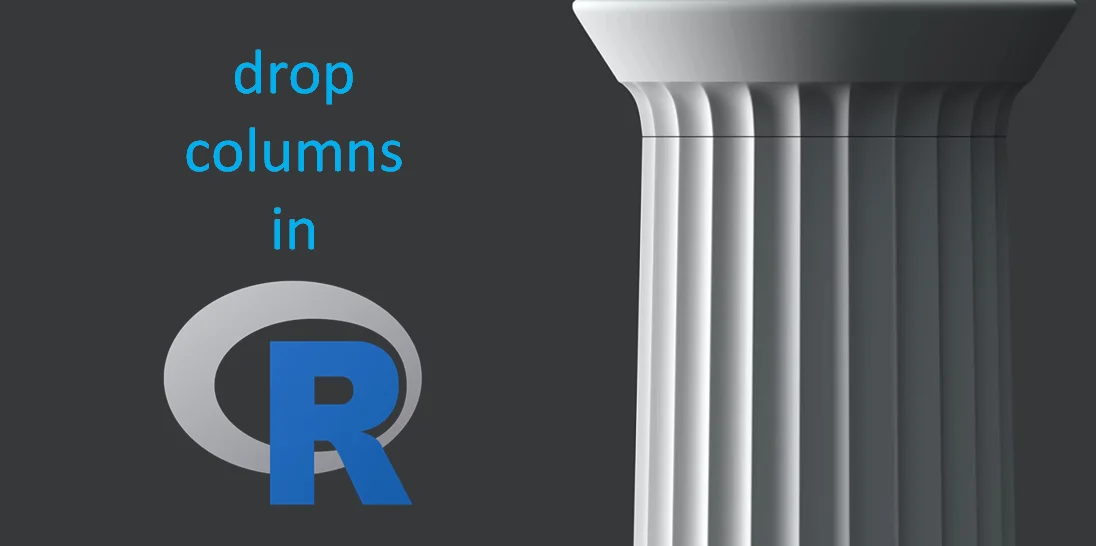Here are multiple ways how to drop one or multiple columns in the R data frame. You can use R base functionality or package like dplyr, but it is not the most time-consuming operation.
By knowing how to do that in different ways, you can choose a suitable approach.
Quickly drop columns in base R
Here is one of my favorite ways to drop columns in R if there is a small amount. As you can see, there are no additional functions involved. Choose a column that you want to drop and replace it with NA.
df <- iris names(df) #[1] "Sepal.Length" "Sepal.Width" "Petal.Length" "Petal.Width" "Species" df$Species <- NULL names(df) #[1] "Sepal.Length" "Sepal.Width" "Petal.Length" "Petal.Width"
You can use the same approach to remove multiple columns at the same time.
df <- iris df$Species <- df$Sepal.Width <- NULL names(df) #[1] "Sepal.Length" "Petal.Length" "Petal.Width"
Drop R data frame columns by column index number or range
Here is how to locate data frame columns by using index numbers or a certain range and drop them. Watch out for situations when a position is changing. The following methods that involve column names might be a safer approach.
df <- iris df <- df[-c(2, 3)] names(df) #[1] "Sepal.Length" "Petal.Width" "Species" #range of columns df <- iris df <- df[-c(2:4)] names(df) #[1] "Sepal.Length" "Species"
Drop columns in R by the list of column names
Let’s say you have a list of column names that you want to remove from a data frame. Here is how to use them in that scenario.
df <- iris
rem <- c("Species"
, "Sepal.Width"
, "Petal.Width")
df <- df[!(names(df) %in% rem)]
names(df)
#[1] "Sepal.Length" "Petal.Length"
Remove columns by using a keyword
If you have a keyword that defines which of the data frame columns should be removed, then here is how to use that. If you have a specific situation and you should use a part of the column name that is at the beginning or the end, then take a look at the following methods that involve dplyr.
df <- iris
df <- df[!grepl('Width', names(df))]
names(df)
#[1] "Sepal.Length" "Petal.Length" "Species"
Drop unnecessary data frame columns with dplyr
Select function from the dplyr package lets you choose a necessary column. Add a minus sign to the column name in the dplyr select function that you want to drop from the data frame.
names(iris) #[1] "Sepal.Length" "Sepal.Width" "Petal.Length" "Petal.Width" "Species" require(dplyr) iris %>% select(-Species) %>% names() #[1] "Sepal.Length" "Sepal.Width" "Petal.Length" "Petal.Width"
It can also be done more advanced way. If you have a keyword, you can use the dplyr function contains and drop all the columns with names that include that.
iris %>% select(-contains('Width')) %>% names()
#[1] "Sepal.Length" "Petal.Length" "Species"That is one of my top 10 favorite dplyr tips and tricks and if you like this one, then take a look at others.
Take a look at other available options that are available in the dplyr package. There are also functions like starts_with if you should drop columns by the beginning of names or ends_with if you should drop columns by the end of names.
iris %>% select(-ends_with('Width')) %>% names()
#[1] "Sepal.Length" "Petal.Length" "Species"
You might be interested
If you like to improve your work with R, then here are my favorite RStudio tips and tricks.
Here are 5 ways how to format output in the R console.

Leave a Reply